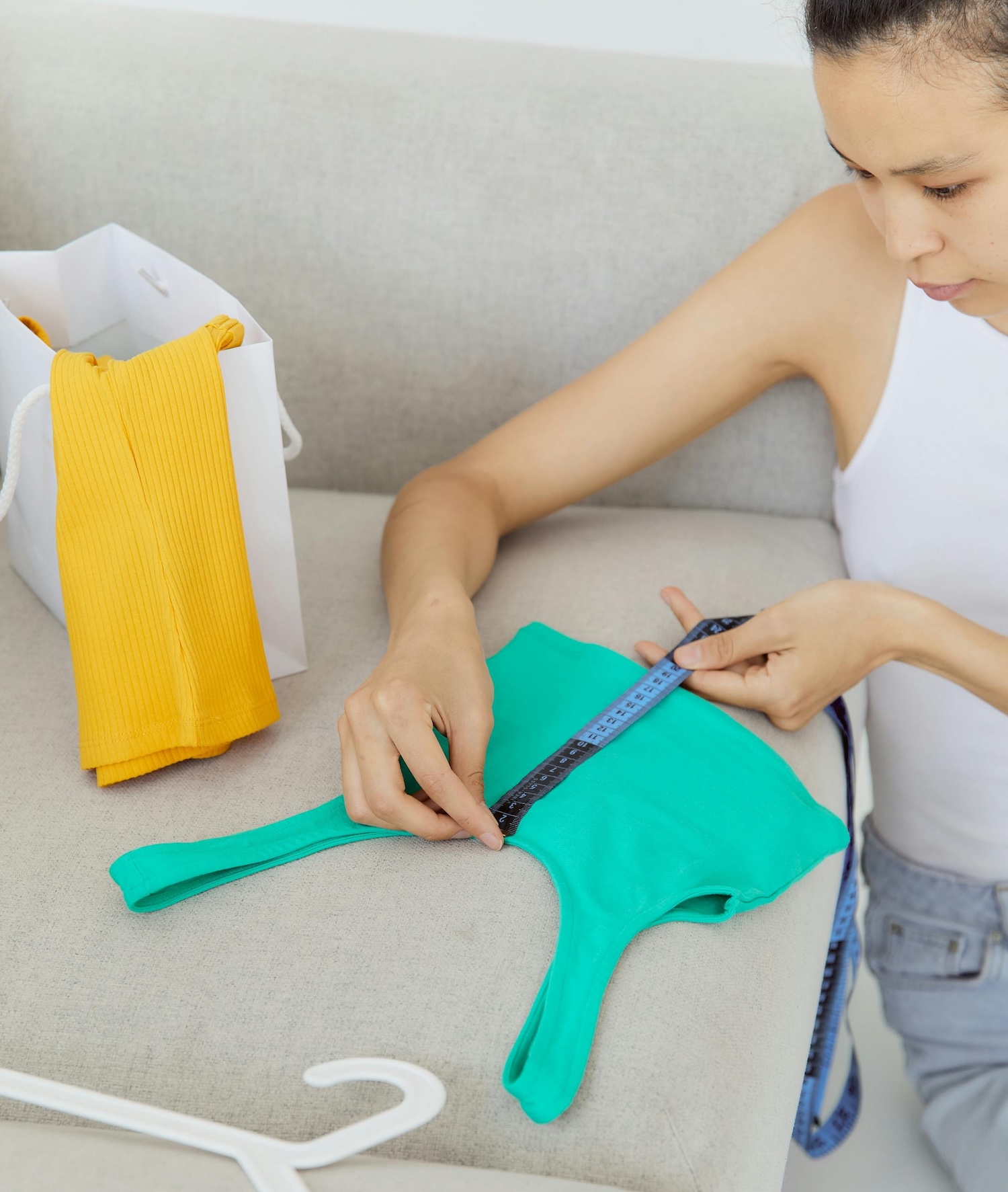
Outfit repeating: Cardinal sin or sign of style?
Haul culture, $5-a-pop T-shirts that last one wear and doin’-it-for-the-’gram have us thinking repeating outfits is a style crime. In our new ThreadFul column, Genevieve Smith shares why we should revere the re-wear
You just got invited to a barbeque. The sun is promised to come out, your friends are joining, and they want you to bring that gorgeous watermelon feta salad you seem to whip up without fail for every seasonal gathering.
So you do. You have red wine vinegar and you picked up mint, which you know brightens the plate. It’s a crowd pleaser; a fan favourite.
But what will you wear?
This is where we enter the vortex of overthought. We all have recipes or gestures that we like to repeat for occasions, be it bringing a bottle of wine, a bouquet of flowers, or, in this case, a summer salad.
Why is it that we don’t treat our clothing the same way? Like a time-tested recipe, to be brought back again and again because it really is that good? Like the concept of salt, fat, heat and acid on a plate, cut, colour and quality will prevail.
I have a handful of cotton sundresses that sit and wait for their moment all year. They aren’t trending (no cut-outs or cargo pockets), they aren’t show-stopping (though my friends might disagree) and they are in desperate need of a steam.
But I know that, without fail, should I be invited to a summer barbeque, that one of these frocks will deliver what they promise. Ease of dressing, and guaranteed compliments. Just like the fan-favoured salad, they bring a quiet confidence. I know I look good, great even, and that’s enough.
That’s the thing about repeating an outfit: it only matters if it matters to you.
And just where did you get the idea that being an outfit repeater is a bad thing?
Don’t you remember the iconic moment where Hilary Duff called out her childhood bully for being an “outfit rememberer” in The Lizzie McGuire Movie? How utterly embarrassing for another human being to memorize your closet just to comment on the next time you dare to repeat such a look.
To you, outfit rememberers, I hope you get a life.
A sign of style
Would it help to consider that you’re helping protect the planet every time you repeat an outfit? If you doubled the times you wore each garment in your closet, greenhouse gas emissions would be 44 per cent lower, according to a 2019 report by research firm McKinsey. That’s almost half. Half.
The truth of the matter, though, is that repeating outfits is a sign of style, not a sin. A successful wardrobe should be built upon a foundational comfort with who you are in any given situation.
I know, that sounds difficult. How does anyone know how they’re going to feel about themselves on any given day? What if what you have just doesn’t suit the mood? Or the dreaded, “who am I?” Don’t we all agonize over this one.

It’s all a little bit less scary than it sounds, I promise. When it comes to building a wardrobe that works for you, it’s about combining what you want to look like with what you know looks good on you. Unfortunately, this means a lot of trial and error. But it also means a little bit of soul-searching, and a little bit of learning, too.
The basics for me (aside from not being made by children in developing countries or businesses run by Bezos) are cut, colour and quality.
Pairing timeless pieces, classic cuts and quality materials with a palette that flatters your unique colouring is the best and simplest way to ensure you escape the vortex — the cycle, the panic, the sheer agony of having nothing to wear.
CUT
Cut is an essential component when learning to dress in a more lasting way. You have to get good at recognizing which shapes are going to flatter you best, highlight your best features, draw attention away from whatever it is you think you don’t like about your body (for the record, you’re the only one who notices that thing).
For example, an A-line cut on shorts and skirts is ideal for anyone who has a narrower waist and wider hips. The seams float away from the body and leave room for your butt and thighs, eliminating that terrible tugging effect. If you, too, have worn a pair of jean shorts too narrow for your thighs, you may be entitled to compensation.
If you have broader shoulders, something with a bit more volume on the bottom is going to balance out that silhouette. Not that I think it needs fixing.
If you have no idea what shape you are, start by taking your measurements. There’s nothing scarier than fear, but nothing fights fear like information.
Continued below
See vintage markets on this month
View our event calendar
Continued from above
COLOUR
Knowing your colouring is of vital importance when building a wardrobe that will deliver season after season.
If you lean towards brighter, warmer colours, work that colourway! I have never in my life heard of someone wearing too much of one colour, if that colour suits them.
I have a men’s button-down shirt in five shades of blue, and, knowing that it will always bring out my eyes, I gravitate towards those cooler tones.
That said, if you lean towards neutrals, there is no shame in your game. But just because you love a colour doesn’t mean everything should be that colour. That means playing with shades. Let me illustrate.
Chestnut, umber, sienna, wenge, maroon, beaver. What do they all have in common? They are all shades of brown. If anyone comes for you for loving neutrals, remind them that colour is a spectrum (like pretty much everything else).
The best advice I have is to listen to the people around you: they don’t have to say anything nice if they don’t want to. So if someone says you look amazing in green? Bestie, believe them.
QUALITY
Some might say that basics are the key to a good wardrobe. I would agree. The current market trends would tell you that name-brand, high-volume stores are going to be the right place to get your tanks, tees, sweaters, etc.
Can you guess what I’m going to say?
They are wrong. Investing in high-quality basics from brands with sound ethics is the way to go.
Considering you’re going to be wearing basics for most of your day-to-day life, shouldn’t they hold up to the test of time?
How many loose threads are we going to pull off those Zara crop tees before realizing that there’s likely a local collective of people making the equivalent product in a more sustainable way, or a reseller stocking secondhand versions that have already stood the test of time? Yes, they will cost you $30-40 a piece, but you won’t be replacing them every six months.

Cost per wear is a great way to work out the value of an item. If I spend $50 on a hand-cut tank top from a designer based here in Toronto (shameless @assistive_touch plug), but wear it once a week for a year, it costs me less than a dollar per wear. Granted, I have four of her shirts, but each was worth every penny in the three years I’ve been blessed to own them.
But spend $50 on two tank tops at Garage, and after the first one stretches out and fails to regain its shape and the second starts pilling and drops a stitch, you will come to realize why I keep chanting: invest in your basics, and invest in your resellers. They are your lifeline.
Rinse and repeat
I’ll leave you with this frightening fact from a 2016 McKinsey report: for every five garments made in factories, the equivalent of three end up incinerated or in landfill. Now picture the two tank tops from Garage are hanging in your closet. That means three more are going straight to the dumpster.
Repeat the outfit. Wear your clothes well. Take them out and treat them right.
If you take the time to find, purchase and care for items that A) flatter you, B) suit your personality and personal preference, and C) are built to last, it won’t matter what combination you reach for when getting dressed — because you know yourself. You know what you like, what looks good on you, and what is good for the planet.
Repeat the look if it’s a winner: there is no shame in dependability.
A good recipe is always a good recipe, and you, darling, are a winning summer salad.
Genevieve Smith is a fashion stylist, writer and founder of Gifts of Thrift. As a yard sale enthusiast, thrift store supporter, and die-hard environmental entrepreneur, she has spent the last two decades trying to figure out how to convince people it is, in fact, cooler to care. Her bimonthly column for The Vintage Seeker, ThreadFul, covers the intersection of thrifting, secondhand fashion, ethical style and sustainability.
Thank you for valuing our work!
Support our work to see this page.
You’ve got a good eye, but this gem is only available for members. Register for a plan or upgrade your current one to peek behind this vintage curtain, or log in below.















